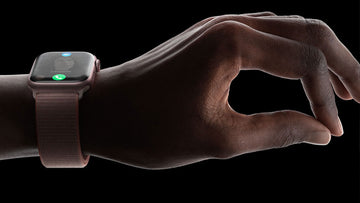Many of us have been spending a lot more time than usual looking at our TV, computer and smartphone screens while stuck at home in COVID-19 isolation. This extra screen time may alleviate boredom, but it may also lead to eyestrain. Although eyestrain doesn’t cause structural or permanent damage, it can create great discomfort and inconvenience. Symptoms include headache, blurry or double vision, sensitivity to light, difficulty concentrating and tense neck, back and shoulder muscles. Eyestrain can also cause sore, tired, dry, burning, watery, red and/or itchy eyes.
Anyone who looks at screens for two or more hours in a row each day is at high risk for eyestrain. Therefore, the simplest way to avoid screen-induced strain is to limit your time on digital devices. But this isn’t always an option – especially for people whose work or study requires copious time on the computer. Luckily, there are strategies you can employ to prevent and reduce eyestrain.

-
Take frequent breaks. It’s important to regularly relax your eyes and the muscles that control them.
- Even in a computer-based job or class, try to identify and intersperse some non-screen tasks throughout your day. Aim for a fifteen-minute break every two hours.
- At the very least, practice the 20-20-20 rule advocated by ophthalmologists. This easy-to-remember technique is to shift your focus from the screen every twenty minutes to something 20 feet away for at least 20 seconds. Another option is closing your eyes while relaxing your face and neck muscles for at least two minutes every half-hour.
-
Position yourself properly relative to your screen.
- Hold/place the device at the recommended distance of an arm’s length or approximately twenty-five inches. If you can’t comfortably read the content at that distance, enlarge the text size and/or raise the colour contrast.
- You should look slightly downward when reading, so your screen should be at level of your eyes or just below. Adjust the placement of your screen or the height of your chair – not your body – to achieve this.
- Always face the screen directly, not at an angle.
- Practice good posture – especially when typing. Avoid hunching or slouching.
-
Adjust your lighting situation and/or screen brightness. Your screen should be neither significantly lighter nor darker than your surroundings.
- When possible, avoid overhead fluorescent lighting and sunlight. Don’t place your screen in front of a white wall or window.
- Position the screen to avoid glares and reflections. These usually come from light above or behind you. If this can’t be avoided, get a matte filter to place over the screen.
- If it’s an option, raise your device’s refresh rate to decrease flickering.
- At night, employ an app like Night Shift to adjust your screen’s colour temperature, reducing how much blue light it emits. This should also help your sleep.
-
Keep your eyes well lubricated.
- Be well rested before long periods of screen use.
- Don’t forget to blink. If you find this difficulty, you can try using a real-time blink reminder system such as VisionProtect.
- Avoid using screens in areas with lots of dust/allergens or in a draught.
-
Get regular eye-exams from a vision-care professional. Eyestrain can be exacerbated by some eye conditions and by using an outdated prescription.
- Wear contact lenses instead of glasses for prolonged screen viewing.
- If your eyestrain is especially bad and/or frequent, consider investing in a pair of computer glasses. (These are different from regular and reading glasses and are often specially tinted to reduce glare and blue light exposure.)

If despite these suggestions you still develop eyestrain, there are some simple things you can do to reduce the discomfort. Just remember to thoroughly wash your hands before touching your face!
- Hold a clean, damp washcloth against your closed eyelids for one minute. Some people prefer a cold compress while others prefer warm. Both can be effective. Cold is generally better for relieving irritation. Warm is more effective at relaxing the muscles around the eyes.
- Try the palming technique. After warming your hands by rubbing them together, cup your palms over your closed eyes. You want to create full darkness but avoid pressing down on the eyes. Remove your hands and slowly reopen your eyes after thirty seconds.
- Over-the-counter artificial tears can help combat dryness. Non-prescription ointments are also available, though usually for use while sleeping as they blur vision. If you have trouble putting things in your eye, a humidifier can help but won’t provide as immediate relief.




